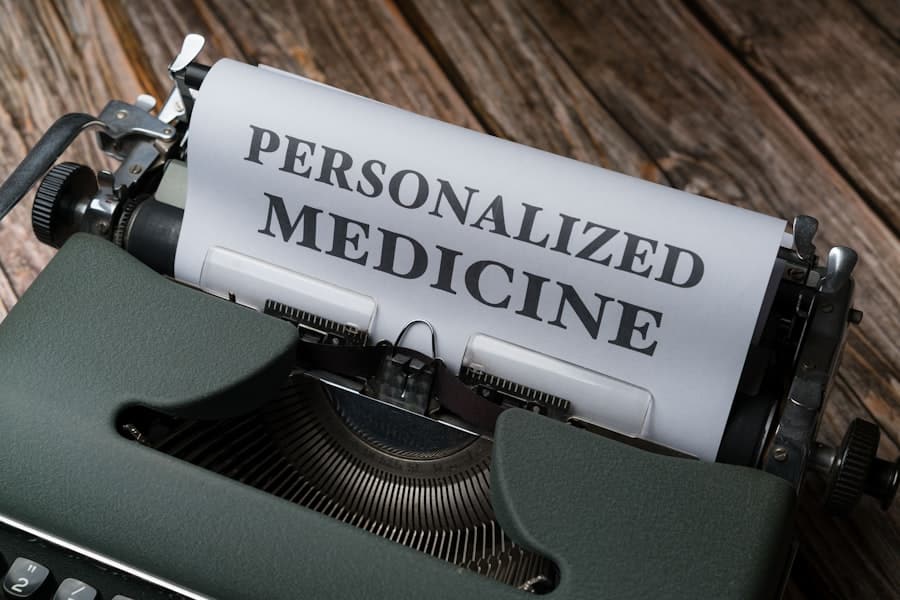Virtual Reality (VR) has emerged as a transformative technology in various fields, and its application in medical training programs is particularly noteworthy. The integration of VR into medical education offers a unique platform for students and professionals to engage in immersive learning experiences that were previously unattainable through traditional methods. By simulating real-life medical scenarios, VR allows learners to practice skills, make decisions, and experience the consequences of their actions in a safe and controlled environment.
This innovative approach not only enhances the educational experience but also prepares future healthcare providers for the complexities of patient care. The evolution of medical training has been significantly influenced by advancements in technology. Historically, medical education relied heavily on lectures, textbooks, and hands-on practice with real patients under supervision.
However, the limitations of these traditional methods have prompted educators to seek more effective alternatives. VR stands out as a powerful tool that can bridge the gap between theoretical knowledge and practical application. By immersing learners in realistic simulations, VR fosters a deeper understanding of medical concepts and procedures, ultimately leading to improved patient outcomes.
Key Takeaways
- VR is revolutionizing medical training programs by providing immersive and realistic learning experiences for students and professionals.
- Advantages of VR in medical training include enhanced engagement, improved retention of information, and the ability to practice in a safe and controlled environment.
- Simulation and immersive learning in VR allow trainees to practice complex procedures, surgical techniques, and patient interactions, leading to better preparedness for real-life scenarios.
- VR training is cost-effective and accessible, reducing the need for expensive equipment and physical space, and allowing for remote learning opportunities.
- Real-world applications of VR in medical training include surgical simulations, anatomy education, patient diagnosis and treatment, and mental health therapy, among others.
Advantages of VR in Medical Training
One of the most compelling advantages of VR in medical training is the ability to provide learners with a risk-free environment to practice their skills. In traditional settings, students often face the pressure of performing procedures on real patients, which can lead to anxiety and fear of making mistakes. VR eliminates this concern by allowing learners to engage in simulations where they can experiment, fail, and learn without jeopardizing patient safety.
This freedom to explore different approaches fosters confidence and competence, essential traits for any healthcare professional. Moreover, VR training can be tailored to meet the specific needs of individual learners. With customizable scenarios, educators can create simulations that address particular skills or knowledge gaps.
For instance, a student struggling with surgical techniques can practice in a VR environment that focuses solely on those skills, receiving immediate feedback on their performance. This personalized approach not only enhances learning outcomes but also promotes a more engaging educational experience. As a result, students are more likely to retain information and apply it effectively in real-world situations.
Simulation and Immersive Learning in VR

The concept of simulation is central to the effectiveness of VR in medical training. By replicating clinical environments and scenarios, VR enables learners to immerse themselves fully in the learning process. This immersive learning experience is particularly beneficial for complex procedures that require a high level of skill and precision.
For example, surgical simulations allow trainees to practice intricate techniques such as suturing or laparoscopic procedures without the risks associated with live surgeries. Immersive learning through VR also enhances critical thinking and decision-making skills. In a simulated environment, learners are often faced with unexpected challenges that require them to think on their feet and adapt their strategies accordingly.
This dynamic aspect of VR training mirrors the unpredictability of real-life medical situations, preparing students for the complexities they will encounter in their careers. Furthermore, the ability to replay scenarios allows learners to reflect on their decisions and improve their performance over time, reinforcing the learning process.
Cost-Effectiveness and Accessibility of VR Training
The cost-effectiveness of VR training is another significant advantage that cannot be overlooked. Traditional medical training often involves substantial expenses related to equipment, materials, and facilities. In contrast, once the initial investment in VR technology is made, the ongoing costs are relatively low.
Educational institutions can create multiple simulations that can be accessed by numerous students simultaneously, reducing the need for physical resources and allowing for more efficient use of time and space. Accessibility is also enhanced through VR training programs. Students from diverse backgrounds and locations can access high-quality training experiences without the need for extensive travel or relocation.
This democratization of medical education is particularly important in underserved areas where access to traditional training facilities may be limited. By leveraging VR technology, institutions can reach a broader audience, ensuring that aspiring healthcare professionals have the opportunity to develop their skills regardless of their geographical constraints.
Real-World Applications of VR in Medical Training
The real-world applications of VR in medical training are vast and varied, spanning multiple disciplines within healthcare. One notable example is its use in surgical training programs.
These simulations not only enhance technical skills but also improve teamwork and communication among surgical teams. Another area where VR has made significant strides is in emergency medicine training. Simulations that replicate high-pressure scenarios—such as trauma cases or cardiac arrests—enable trainees to practice their response under stress.
Programs like the Virtual Reality Medical Center have developed immersive scenarios that challenge learners to make quick decisions while managing multiple variables, thereby honing their ability to perform effectively in real-life emergencies.
Challenges and Limitations of VR in Medical Training

Despite its many advantages, the integration of VR into medical training is not without challenges and limitations. One significant hurdle is the initial cost associated with acquiring VR technology and developing high-quality simulations. While long-term savings may be realized through reduced resource needs, the upfront investment can be a barrier for some educational institutions, particularly those with limited budgets.
Additionally, there are concerns regarding the standardization of VR training programs. The quality and effectiveness of simulations can vary widely depending on the developers’ expertise and resources available for creating realistic scenarios. Without established guidelines or accreditation processes for VR training programs, there is a risk that some institutions may offer subpar experiences that do not adequately prepare students for real-world challenges.
Future of VR in Medical Training Programs
Looking ahead, the future of VR in medical training programs appears promising as technology continues to advance at an unprecedented pace. Innovations such as haptic feedback devices are being developed to enhance the realism of simulations by providing tactile sensations during procedures. This added dimension could further bridge the gap between virtual practice and real-life experiences, allowing learners to develop muscle memory and fine motor skills essential for successful patient care.
Moreover, as artificial intelligence (AI) becomes increasingly integrated into educational technologies, we can expect more personalized learning experiences within VR environments. AI algorithms could analyze a learner’s performance in real-time, offering tailored feedback and adjusting scenarios based on individual strengths and weaknesses. This adaptive learning approach would ensure that each student receives the support they need to excel in their training.
The Growing Importance of VR in Medical Education
The growing importance of VR in medical education cannot be overstated. As healthcare continues to evolve and become more complex, the need for innovative training solutions becomes increasingly critical. By providing immersive learning experiences that enhance skill acquisition, critical thinking, and decision-making abilities, VR is revolutionizing how future healthcare professionals are trained.
As we move forward into an era where technology plays an integral role in education, it is essential for medical institutions to embrace these advancements fully. The potential benefits of VR—ranging from improved patient safety to enhanced accessibility—make it a vital component of modern medical training programs. As educators continue to explore and refine these technologies, we can anticipate a future where healthcare professionals are better equipped to meet the challenges of an ever-changing landscape, ultimately leading to improved patient care and outcomes across the globe.
Virtual reality (VR) is revolutionizing medical training programs by providing immersive, hands-on experiences that enhance learning and skill development. As VR technology continues to evolve, its applications in various fields, including healthcare, are expanding rapidly. This trend is part of a broader technological advancement that is influencing multiple industries. For instance, the return of Instagram’s founders to the social media scene highlights how innovation and technology are reshaping our interactions and experiences. To explore more about the impact of technological advancements in different sectors, you can read this related article: What We Can Learn from Instagram’s Founders’ Return to the Social Media Scene. This article provides insights into how technology-driven changes are influencing various domains, much like VR is transforming medical training.
FAQs
What is VR?
VR stands for virtual reality, which is a computer-generated simulation of an environment that can be interacted with in a seemingly real or physical way by a person using special electronic equipment, such as a helmet with a screen inside or gloves fitted with sensors.
How is VR being used in medical training programs?
VR is being used in medical training programs to simulate realistic medical scenarios, surgeries, and patient interactions. This allows medical students and professionals to practice and improve their skills in a safe and controlled environment.
What are the benefits of using VR in medical training programs?
Some benefits of using VR in medical training programs include the ability to practice high-risk procedures without putting patients at risk, the opportunity to repeat scenarios and receive immediate feedback, and the potential to improve retention and understanding of complex medical concepts.
Are there any drawbacks to using VR in medical training programs?
Some potential drawbacks of using VR in medical training programs include the high cost of equipment and software, the need for specialized training to use VR technology effectively, and the possibility of simulation not fully replicating real-life scenarios.
Is VR becoming essential in medical training programs?
Yes, VR is becoming essential in medical training programs due to its ability to provide realistic and immersive learning experiences, improve skill development, and enhance patient safety. As technology continues to advance, VR is expected to play an increasingly important role in medical education and training.

